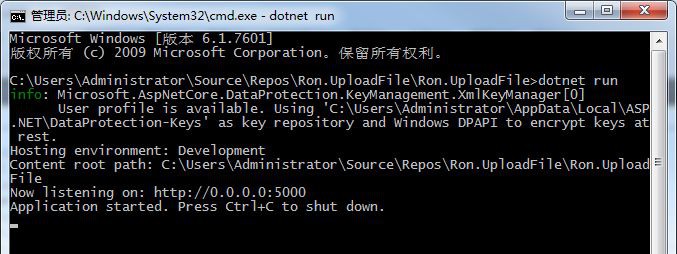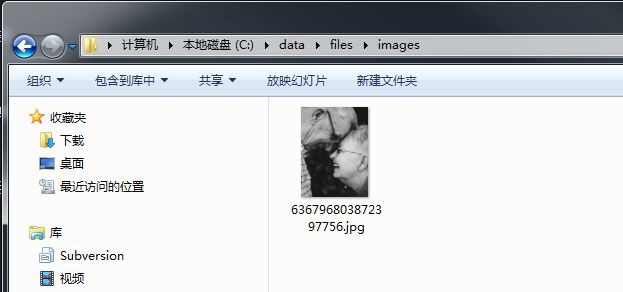前言
在 Web 應用程式開發過程中,總是無法避免涉及到檔案上傳,這次我們來聊一聊怎麼去實現一個簡單方便可復用檔案上傳功能;透過建立自定義系結模型來實現檔案上傳。
一、實現自定義系結模型
1.1、 在 Asp.Net Core MVC 中,內建了很多種系結模型,讓我們可以很方便的去使用,比如下麵常用的幾種系結模型
FromBodyAttribute
FromFromAttribute
FromQueryAttribute
FromHeaderAttribute
FromServicesAttribute
FromRouteAttribute
常見用法比如
[HttpPost]
public async Task PostInfo([FromBody]UserInfo user,[FromQuery] string city)
{
...
}
檢視以上系結模型,唯獨缺少一個 FromFileAttribute ,下麵就來實現一個自己的 FromFileAttribute
public class FromFileAttribute : Attribute, IBindingSourceMetadata
{
public BindingSource BindingSource => BindingSource.FormFile;
}
非常簡單,就三行程式碼,完全照抄系統內建的系結模型,唯一不同的就是指定 BindingSource 為 BindingSource.FormFile。
二、實現一個上傳檔案物體類,專門用於接收客戶端引數
2.1 、建立 UserFile
public class UserFile
{
public string FileName { get; set; }
public long Length { get; set; }
public string Extension { get; set; }
public string FileType { get; set; }
private readonly static string[] Filters = { ".jpg", ".png", ".bmp" };
public bool IsValid => !string.IsNullOrEmpty(this.Extension) && Filters.Contains(this.Extension);
private IFormFile file;
public IFormFile File
{
get { return file; }
set
{
if (value != null)
{
this.file = value;
this.FileType = this.file.ContentType;
this.Length = this.file.Length;
this.Extension = this.file.FileName.Substring(file.FileName.LastIndexOf('.'));
if (string.IsNullOrEmpty(this.FileName))
this.FileName = this.FileName;
}
}
}
public async Task<string> SaveAs(string destinationDir = null)
{
if (this.file == null)
throw new ArgumentNullException("沒有需要儲存的檔案");
if (destinationDir != null)
Directory.CreateDirectory(destinationDir);
var newName = DateTime.Now.Ticks;
var newFile = Path.Combine(destinationDir ?? "", $"{newName}{this.Extension}");
using (FileStream fs = new FileStream(newFile, FileMode.CreateNew))
{
await this.file.CopyToAsync(fs);
fs.Flush();
}
return newFile;
}
}
UserFile 是一個帶保持檔案行為的物體類,該類的公共屬性用於從表單域中接收和屬性名稱相同的表單值,其中公共屬性 File 用於接收檔案,併在設定值的時候去做一些其它屬性初始化的工作,比如檔案長度和副檔名、檔案型別
其中還實現了一個簡單的檔案過濾器,判斷客戶端上傳的檔案是否屬於服務端允許上傳的檔案副檔名
最後 SaveAs(string destinationDir = null) 透過傳入指定目錄,將檔案儲存,並傳回儲存後的檔案絕對路徑
三、上傳檔案
3.1、下麵就定義一個簡單的 API 介面,用於測試上傳檔案
[HttpPost]
public async Task Post([FromFile]UserFile file)
{
if (file == null || !file.IsValid)
return new JsonResult(new { code = 500, message = "不允許上傳的檔案型別" });
string newFile = string.Empty;
if (file != null)
newFile = await file.SaveAs("/data/files/images");
return new JsonResult(new { code = 0, message = "成功", url = newFile });
}
3.2、首先是在 Post([FromFile]UserFile file) 中使用上面建立的 FromFileAttribute 對模型 UserFile 進行系結,然後驗證檔案是否正確,接下來透過 file.SaveAs(“/data/files/images”); 儲存檔案
3.3 、上傳程式碼非常簡單,幾乎到了無法精簡的程度,最終發揮作用的就是 file.SaveAs 操作
四、上傳測試
4.1 現在透過控制檯啟動服務

4.2 使用 Postman 模擬表單上傳檔案

4.3 上傳成功,現在來檢視目錄下是否有檔案

結語
-
在上傳表單中,我們定義了附件的名稱為 file 對應系結模型的公共屬性 File,這樣模型就可以自動獲得該檔案
-
表單中還傳遞了另外一個欄位 filename,對應系結模型的公共屬性 FileName,實現自定義檔案友好顯示名稱
-
透過自定義模型系結,實現了快速上傳檔案功能,該功能只能用於上傳小檔案,對於大檔案,還是需要實現分片上傳,或者使用 CDN 等服務商的介面
示例程式碼下載
https://files.cnblogs.com/files/viter/Ron.UploadFile.zi
 知識星球
知識星球